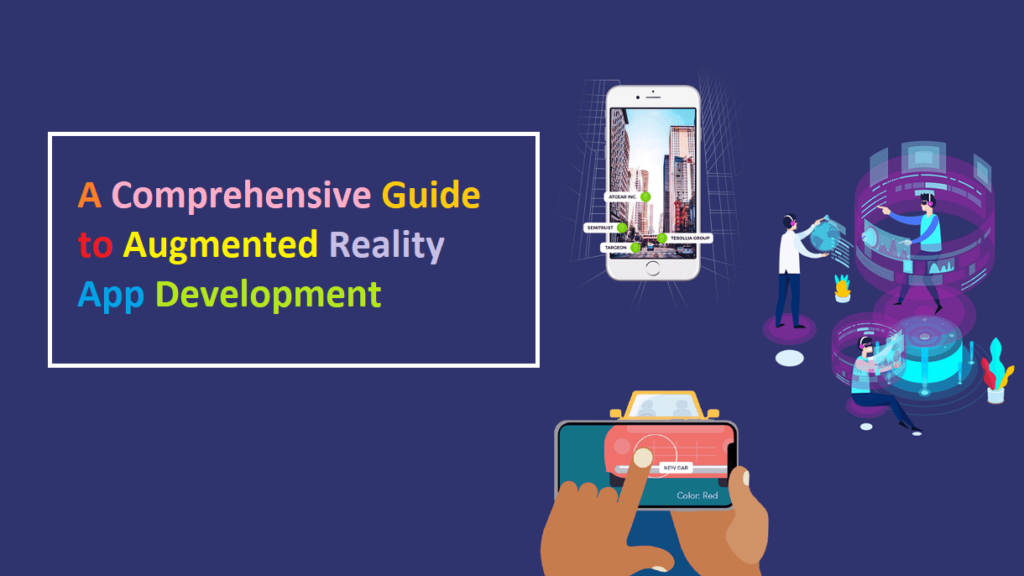Augmented Reality (AR) is no longer a futuristic concept confined to sci-fi movies. Today, it’s a burgeoning field that’s transforming industries and enhancing everyday experiences. From gaming and retail to education and healthcare, AR applications are revolutionizing how we interact with the digital and physical worlds. In this blog, we’ll explore the essentials of augmented reality app development, the technologies driving it, and best practices for creating immersive AR experiences.
What is Augmented Reality?
Augmented Reality overlays digital information—such as images, sounds, or other data—onto the real world, enhancing the user’s perception and interaction with their surroundings. Unlike Virtual Reality (VR), which creates a completely immersive digital environment, AR blends the physical and virtual worlds, adding a layer of digital content to the real environment.
Key Technologies in AR App Development
AR app development leverages several technologies to create immersive experiences:
- Sensors and Cameras: These devices capture the real-world environment and enable the app to overlay digital content accurately.
- Processing: AR apps require significant processing power to render 3D objects and perform complex calculations in real-time. This is typically handled by the device’s CPU and GPU.
- Displays: Displays are critical for viewing AR content. This includes smartphones, tablets, smart glasses, and heads-up displays (HUDs).
- Software: AR development relies on software tools and frameworks like ARKit (iOS), ARCore (Android), Vuforia, and Unity to create, manage, and deploy AR content.
- Tracking: AR apps use tracking technologies to determine the position and orientation of the device in real-time. This includes marker-based tracking (using QR codes or images) and markerless tracking (using feature points in the environment).
Steps to Develop an AR App
- Define Your Objectives
- Identify the problem your AR app will solve or the experience it will enhance.
- Understand your target audience and their needs.
- Choose the Right AR Platform
- Select a development platform that aligns with your project requirements. Popular choices include ARKit for iOS, ARCore for Android, Vuforia for cross-platform development, and Unity for advanced 3D content creation.
- Design the User Experience (UX)
- Focus on creating an intuitive and engaging user interface (UI).
- Consider the context of use, ensuring the AR elements are easily accessible and interactable.
- Maintain a balance between digital and real-world elements to avoid overwhelming the user.
- Develop the AR App
- Set up your development environment with the necessary tools and SDKs.
- Start with basic functionalities like object recognition and tracking.
- Incrementally add features such as 3D models, animations, and interactions.
- Test and Iterate
- Thoroughly test the app in different environments and conditions to ensure robustness and accuracy.
- Gather user feedback to identify areas for improvement.
- Continuously refine the app based on testing and feedback.
- Deploy and Maintain
- Publish the app on relevant platforms like the App Store or Google Play.
- Provide regular updates to fix bugs, improve performance, and add new features.
- Monitor user feedback and analytics to continually enhance the AR experience.
Best Practices for AR App Development
- Prioritize Performance
- Optimize 3D models and animations to ensure smooth performance.
- Use efficient algorithms for real-time processing and tracking.
- Ensure Usability
- Keep the user interface simple and intuitive.
- Provide clear instructions and feedback to guide users through AR interactions.
- Focus on Realism
- Use realistic textures, lighting, and shadows to enhance the believability of AR content.
- Ensure digital objects blend seamlessly with the real environment.
- Consider Privacy and Security
- Implement robust security measures to protect user data and privacy.
- Clearly communicate how data is collected, used, and stored.
- Plan for Scalability
- Design the app architecture to accommodate future updates and feature expansions.
- Use modular components to make it easier to add new functionalities.
AR App Development Tools
Here are some of the most popular tools and frameworks for AR app development:
- ARKit: An iOS SDK by Apple that allows developers to create AR experiences for iPhone and iPad.
- ARCore: Google’s platform for building AR apps on Android devices.
- Vuforia: A cross-platform AR development tool that supports various devices and use cases.
- Unity: A powerful game engine that supports AR development, providing advanced tools for creating 3D content and interactive experiences.
- Unreal Engine: Another game engine that offers high-quality graphics and AR development capabilities.
Real-World Applications of AR
- Retail: Brands use AR to allow customers to virtually try on clothes, accessories, or makeup, enhancing the shopping experience.
- Education: AR enables interactive learning by overlaying educational content onto physical objects, making learning more engaging and immersive.
- Healthcare: AR assists in medical training, surgery planning, and patient education by providing detailed visualizations of the human body.
- Entertainment: AR games like Pokémon GO have demonstrated the potential of AR in creating engaging and interactive entertainment experiences.
- Real Estate: AR apps allow potential buyers to visualize properties in 3D, even if they are not physically present at the location.
Conclusion
Augmented Reality is a transformative technology that enhances how we interact with the world. By overlaying digital content onto the physical environment, AR apps create immersive and interactive experiences that can revolutionize industries and improve daily life. Developing a successful AR app involves choosing the right technologies, focusing on user experience, and adhering to best practices to ensure performance, usability, and security. As AR technology continues to advance, the possibilities for innovation are limitless, making now an exciting time to delve into AR mobile app development.
